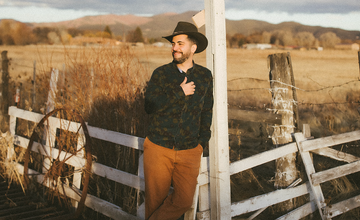Have you ever felt like you’re more than one person?

Like there are different parts of you—some fully out in the world, some waiting in the wings—that all have something to say, something to do, something to be?
Maybe you’ve noticed it in small ways—how you show up with your partner, versus your friends, versus your co-workers.
Or maybe you feel it in bigger ways, like the gap between the life you’re living and the ones you dream about.
It’s not that you’re being fake. It’s not even that you’re indecisive. It’s that, like all of us, you contain multitudes.
What It Means to Contain Multitudes
We all wear different hats, play different roles, and carry different parts of ourselves into the world.
For me, today:
I am…
- a game creator,
- a musician,
- an experience designer,
- a writer,
- a lover,
- a brother,
- a son,
- someone who wants to build community.

Some days I feel like I’m juggling all those identities, trying to give each one the attention it deserves, all while I navigate the changes in those identities (for example, I just got engaged!).
But, I only have so much time and energy. And sometimes, those multitudes within me pull me in conflicting directions.
Yet that’s the beauty of it. We’re not meant to be one thing or another—we’re meant to hold all these pieces, even when they don’t perfectly fit.
The Science of Multitudes
Psychologists have been exploring this for years, and they’ve found that embracing our multitudes can actually make us more resilient.
One idea, called self-complexity theory, suggests that people with more “selves” (work self, family self, creative self, etc.) are better at handling stress. It’s like emotional diversification: if one part of life gets tough, another part can balance you out.
Then there’s Internal Family Systems (IFS) therapy, which sees us as made up of different “parts” or voices—like the nurturer, the critic, the dreamer. These parts sometimes clash, but learning to understand and integrate them can lead to greater self-acceptance.
You’re not just one thing. You’re many things. And that’s not a flaw; it’s a strength.
Why We Struggle to See This in Others
If we contain multitudes, why do we so often flatten other people into one-dimensional characters?
Part of it comes down to how our brains work. Cognitive biases like the halo effect make it easier to label people: the funny friend, the strict teacher, the difficult coworker. These mental shortcuts help us process information quickly but often at the expense of seeing someone’s full complexity.
Social media only amplifies this. It flattens people into curated roles—the overachiever, the adventurer, the comedian—making it harder to imagine the layers beneath.
But when we slow down—to ask questions, to really listen—we begin to notice the contradictions, the hidden depths, the humanity in others. And that’s where true connection begins.
Why It Matters to Embrace Multitudes
Understanding your multitudes isn’t just about self-awareness; it’s about giving yourself permission to be dynamic, imperfect, and real.
It means accepting that you don’t have to have it all figured out. That you can be a work-in-progress in some areas and totally at ease in others. That you can love one thing passionately today and something completely different tomorrow.
In relationships, it means seeing others as full, layered people—not just the version of themselves they show you. It means making space for contradictions, for growth, for surprise.
And in communities, it means recognizing that we all bring something unique to the table. Even when we seem different, there’s always more to the story.
How Multitudes Helps Us Embrace This

That’s the heart of the game I created.
Multitudes is designed to help you explore those hidden layers—the ones you might not even think to share—and invite others to do the same.
Through the structured sequencing of prompts, the game creates space for vulnerability, curiosity, and play. It’s not about being one thing or another—it’s about being all of it.
Because when we start to see the multitudes within ourselves and others, we open the door to deeper connection, greater empathy, and a fuller, richer way of being human.


